Snakes are fascinating, yet fearsome creatures that slither through the wilds of North America, and some of them are downright terrifying. While not every snake is out to get you, there are definitely moments when crossing paths with one of these reptiles can send a chill down your spine. Whether you’re an adventurous hiker or just someone who prefers to admire wildlife from afar, knowing a bit about these serpents can make all the difference in staying safe. So, let’s take a closer look at some of the scariest snakes that call North America home.
1. Eastern Diamondback Rattlesnake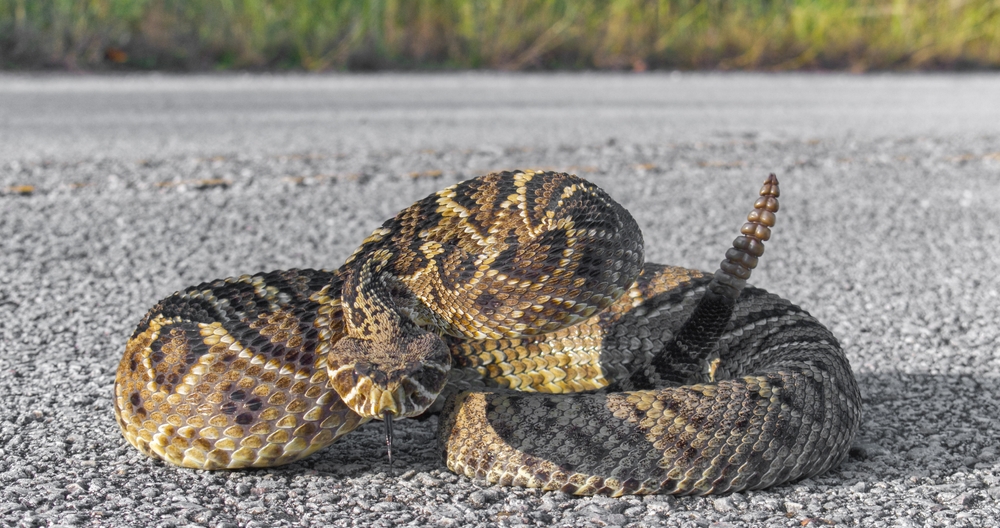 provided by Shutterstock
provided by Shutterstock
The Eastern Diamondback Rattlesnake holds the title as the largest venomous snake in North America and, trust us, its reputation precedes it. According to National Geographic, these snakes are found primarily in the southeastern United States. Their diamond-shaped patterns might be beautiful if they weren’t so ominous. Its rattling warning is one sound you don’t want to hear while hiking through the underbrush.
With venom potent enough to be life-threatening, this snake commands respect from humans and animals alike. Though bites are rare, the Eastern Diamondback prefers to warn rather than strike, giving you a chance to back away slowly. So, pay attention to your surroundings and, if you hear that rattle, give the snake a wide berth.
2. Western Diamondback Rattlesnake
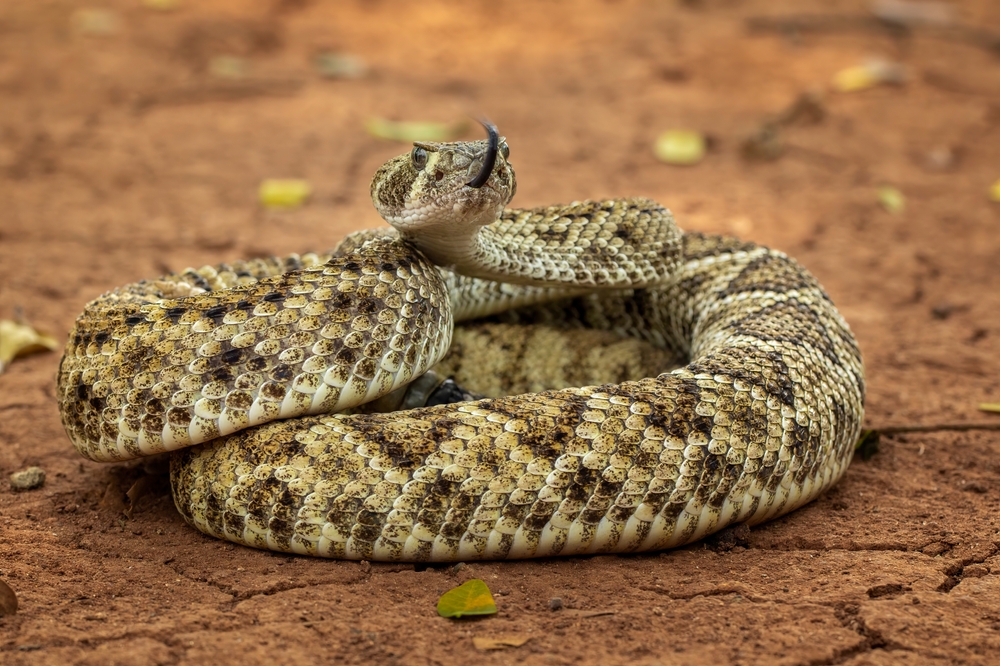
The Western Diamondback Rattlesnake is a cousin of the Eastern variety and can be found across the southwestern United States. Known for its striking diamond pattern and signature rattle, this snake isn’t one you want to meet unexpectedly on a desert hike. Its venom, while less potent than its eastern cousin, can still pack a punch.
According to Snakes of the Land, this snake’s aggressive defense mechanism—coiling and rattling loudly—is both a warning and a reminder to respect its space. Encounters are more likely in arid regions, where the snake blends perfectly with its environment. As always, keeping a respectful distance is the key to avoiding a painful encounter.
3. Mojave Rattlesnake
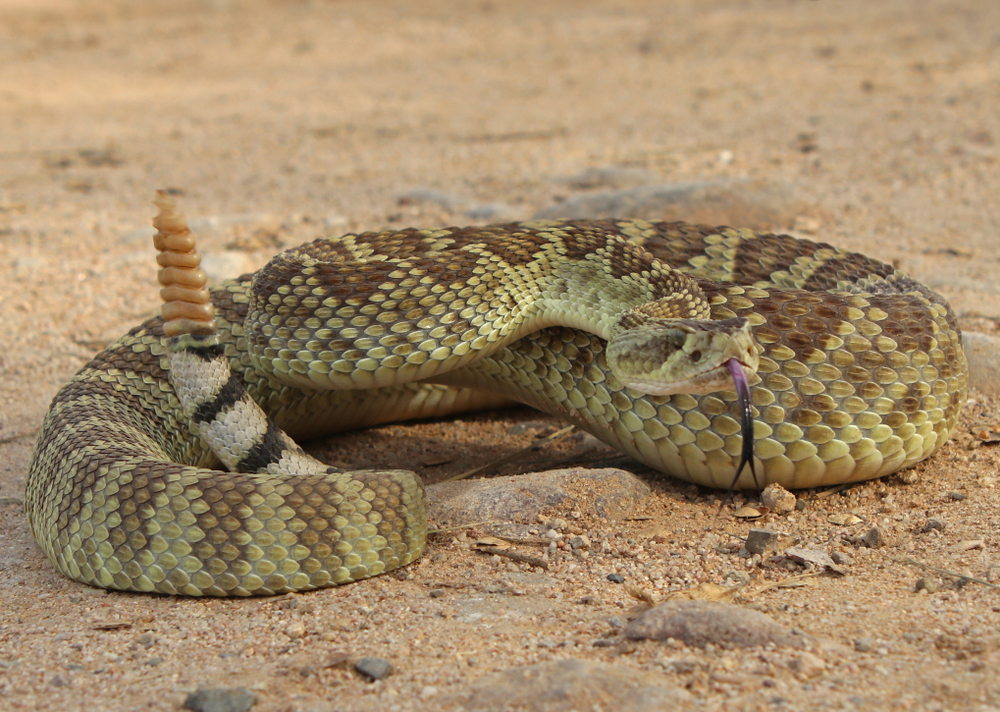
Meet the Mojave Rattlesnake, often considered the most dangerous rattlesnake in North America due to its highly potent venom. Found in the deserts of the southwestern U.S., this snake’s venom contains neurotoxins that can be particularly damaging. With its distinctive greenish hue, it’s sometimes mistaken for less dangerous species, but make no mistake, this snake is not to be underestimated.
Despite its fearsome reputation, the Mojave Rattlesnake rarely bites unless provoked or threatened. If you do find yourself in its territory, be vigilant and steer clear of any suspicious rustling in the brush. Remember that this snake’s natural camouflage makes it difficult to spot, so tread carefully in desert landscapes.
4. Timber Rattlesnake
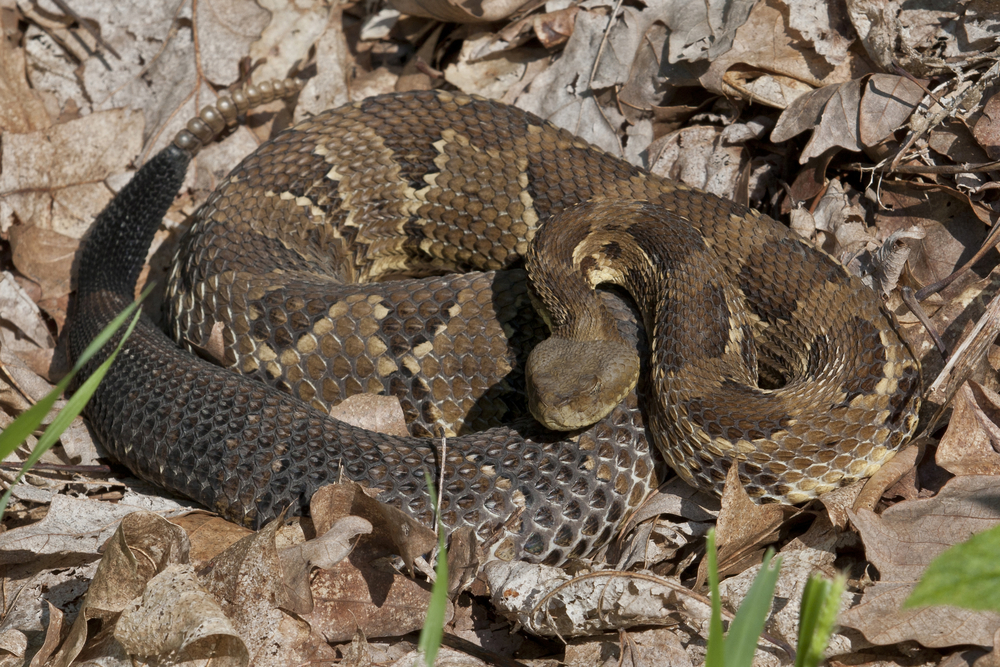
The Timber Rattlesnake is a native to the deciduous forests of the eastern U.S., boasting a striking color pattern that helps it blend into leaf litter. This snake’s laid-back demeanor can be deceiving as it possesses a venomous bite capable of causing serious harm. Fortunately, it tends to rely on its camouflage and reserved nature to avoid human interaction.
Visitors to the Appalachian Mountains or New England forests should be aware of this snake’s presence and keep to established trails. Though attacks are rare, it’s always wise to give any rattlesnake you encounter plenty of room to move away. Remember, the Timber Rattlesnake is just as invested in avoiding you as you are in avoiding it.
5. Copperhead
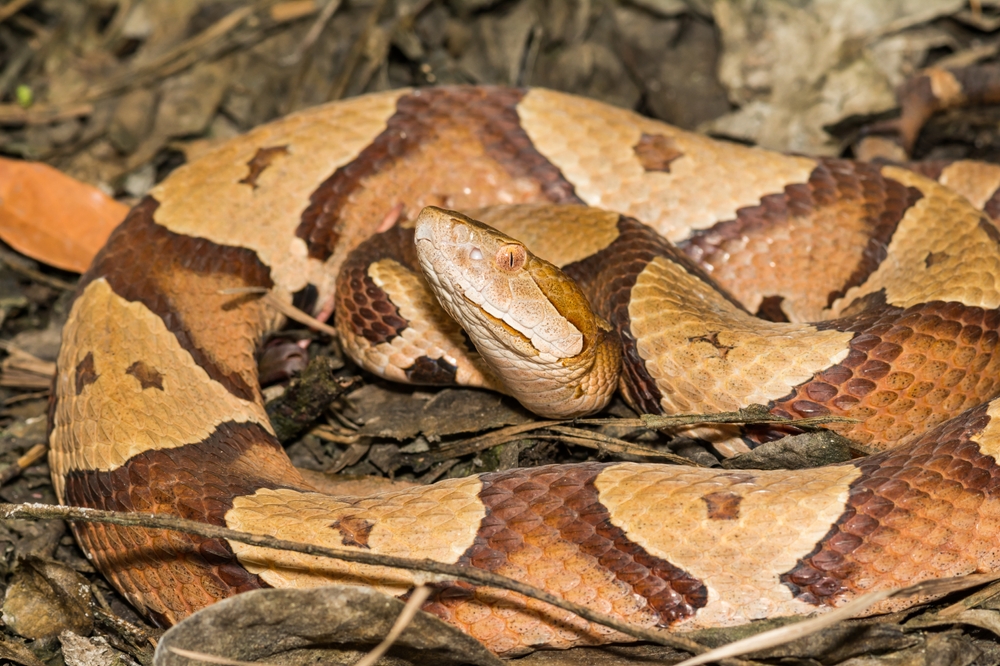
Copperheads might not be the largest or most venomous snakes on the list, but their remarkable camouflage makes them one of the most dangerous. Found throughout the eastern and central U.S., these snakes blend seamlessly into their surroundings, often resulting in accidental encounters. Their bite, while rarely fatal to humans, can be incredibly painful.
Copperheads are typically non-aggressive and prefer to remain still when threatened, relying on their ability to go unnoticed. This characteristic makes it especially important to watch where you step while hiking through their habitats. Remember, a cautious approach and respect for their space can prevent most unwanted interactions.
6. Cottonmouth (Water Moccasin)
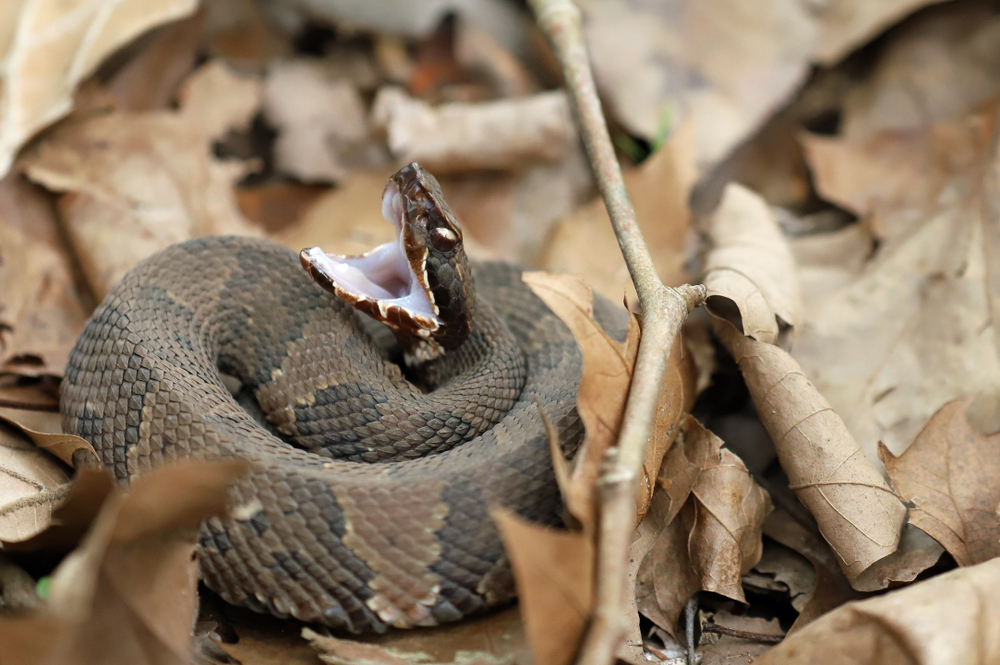
Commonly known as the Cottonmouth, this semi-aquatic snake is infamous for its defensive behavior and potent venom. Found in the southeastern U.S., it prefers swamps, marshes, and slow-moving streams, a perfect environment for its camouflaged skin. When threatened, the Cottonmouth displays a distinctive gaping mouth with a white interior, hence its name.
Its bold defense display is a warning to keep your distance, as it will stand its ground if provoked. If you’re exploring wetland areas, be cautious near the water’s edge where these snakes patrol. Keeping a healthy respect for their territory will help ensure a safe and incident-free encounter.
7. Coral Snake
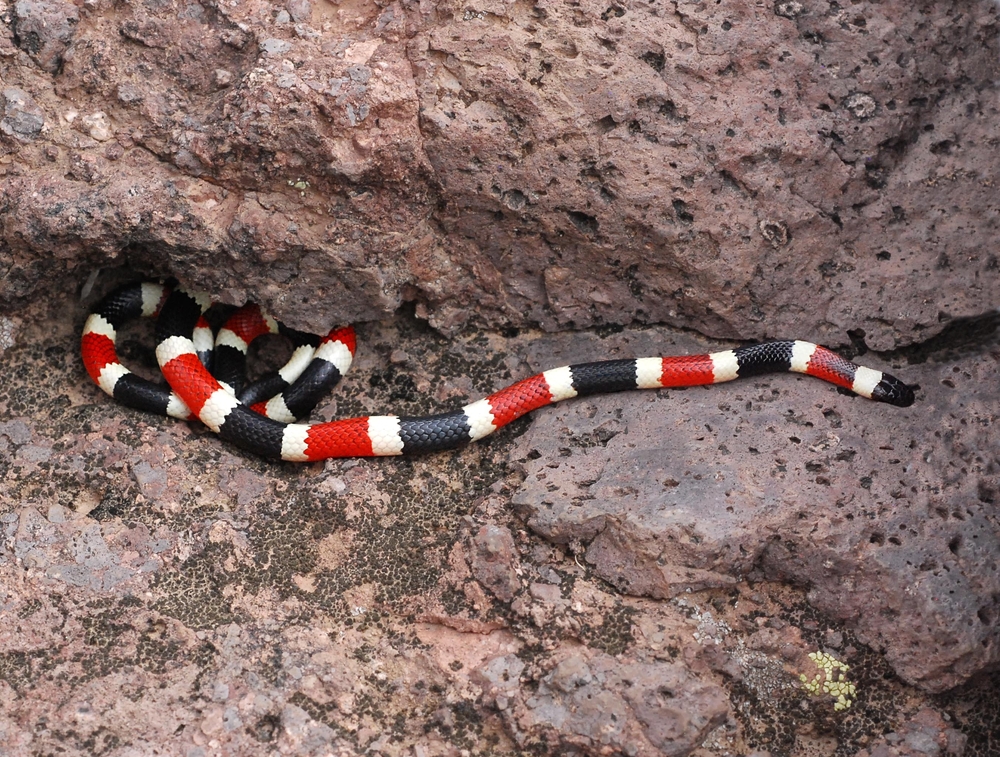
“Red touch yellow, kill a fellow”—it’s an old saying, but a good one when identifying the venomous Coral Snake. Found in the southeastern U.S., this snake is known for its distinctive red, yellow, and black banding. Although small, the Coral Snake’s neurotoxic venom can be extremely dangerous if untreated.
Coral Snakes are reclusive and prefer to avoid human interaction, often hiding under leaf litter or buried in sand. Despite their shyness, it’s essential to recognize these snakes and steer clear if encountered. In the event of a bite, immediate medical attention is crucial due to the potency of their venom.
8. Prairie Rattlesnake
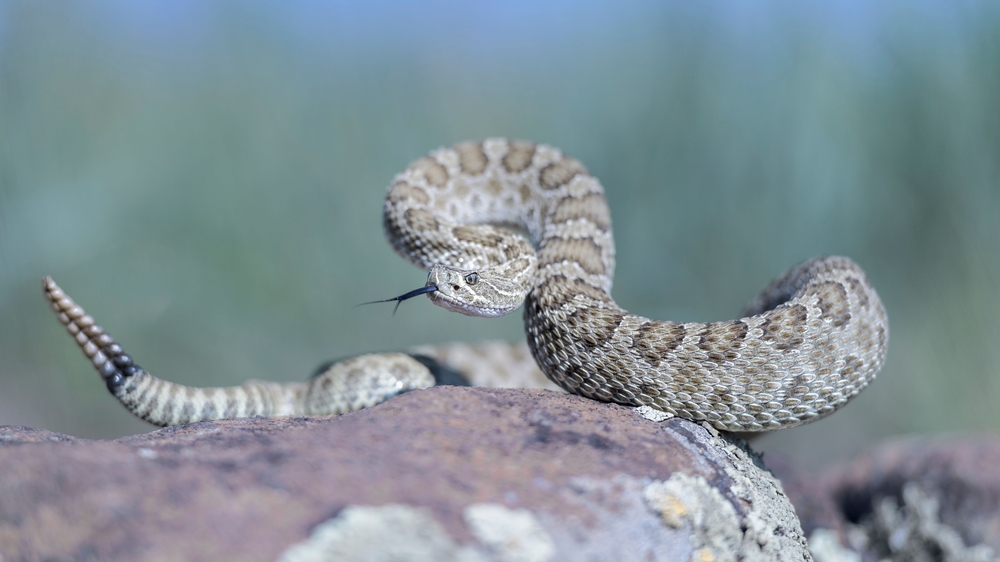
The Prairie Rattlesnake, residing in the Great Plains and the Rocky Mountains, is a snake that commands both respect and caution. With its distinctive rattle and diamondback pattern, this snake might not be the largest, but its venom can cause significant harm. It’s more likely to be encountered in grasslands and open prairies where its natural pattern provides excellent camouflage.
This snake, like many rattlers, prefers to avoid confrontation but will defend itself vigorously if cornered. If you hear the telltale rattle while exploring the plains, it’s time to back away slowly. Remaining aware of your surroundings will help you avoid unwanted surprises in Prairie Rattlesnake territory.
9. Black-tailed Rattlesnake
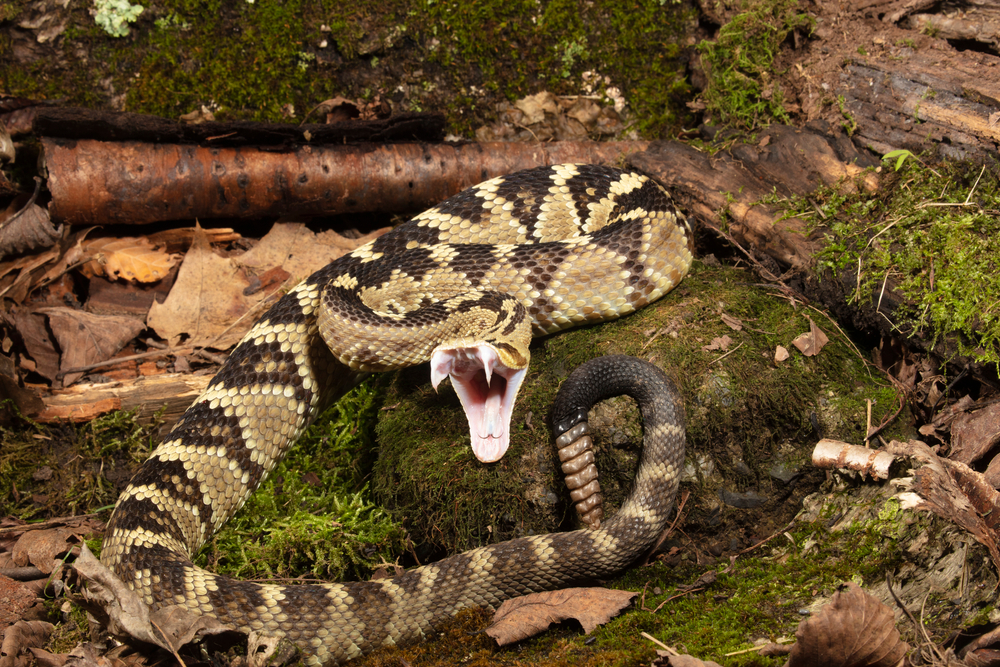
The Black-tailed Rattlesnake, found in the southwestern U.S., is known for its striking appearance and calm demeanor. This snake’s name comes from the distinctive black coloration on its tail, contrasting with its yellow or green body. While its venom is less potent than other rattlesnakes, it’s still a snake to be respected.
Typically found in rocky areas and desert environments, the Black-tailed Rattlesnake tends to be more docile and will often retreat when threatened. However, it’s wise to give this snake a wide berth if you encounter it in the wild. Respecting its space and avoiding sudden movements can ensure a peaceful coexistence.
10. Pygmy Rattlesnake
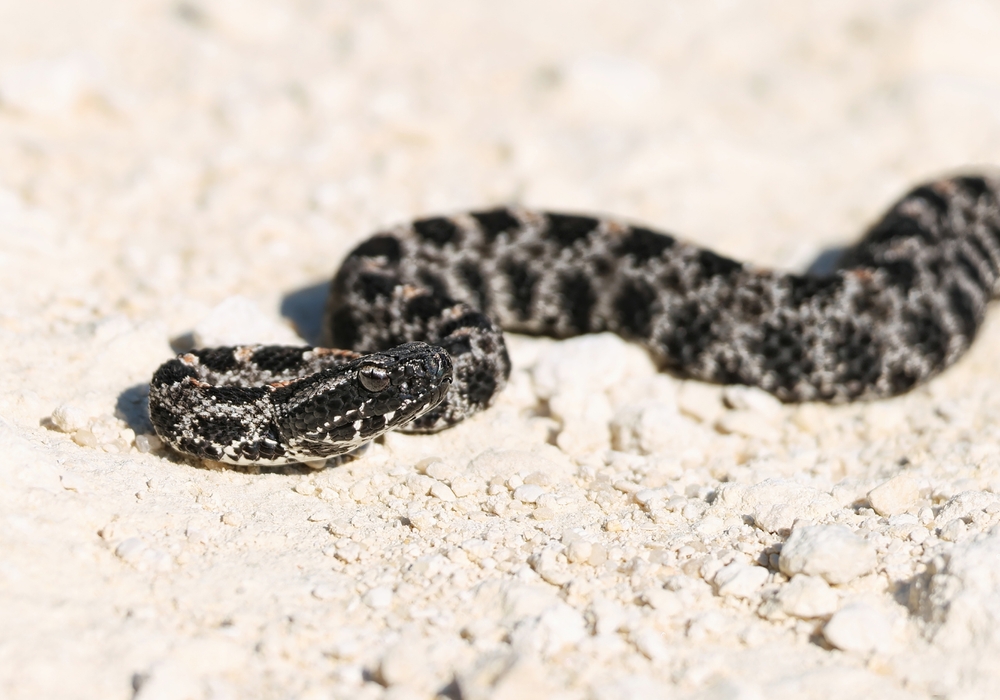
Don’t let the name fool you; the Pygmy Rattlesnake may be small, but it’s still a formidable predator. Found in the southeastern U.S., this snake is known for its vibrant patterns and smaller stature, which can make it difficult to spot. Its venom, while not typically life-threatening, can cause considerable pain and discomfort.
The Pygmy Rattlesnake’s rattle might be quieter than its larger cousins, making it less of a warning and more of a surprise. This snake’s preference for hiding in leaf litter and underbrush means hikers should watch their step. Awareness and caution are your best defenses against an unexpected encounter.
11. Massasauga Rattlesnake
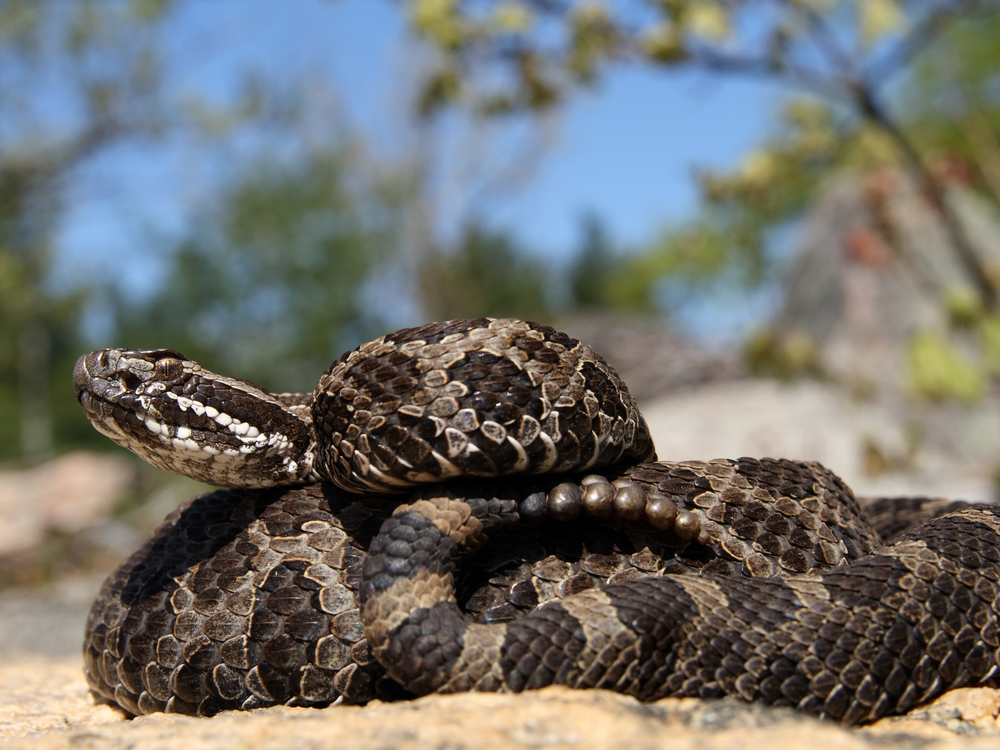
The Massasauga Rattlesnake is a shy and elusive snake that can be found in parts of the Midwest and Great Lakes region. Known for its small size and gray or light brown coloration, it blends seamlessly into its marshy and grassy habitats. Despite its timid nature, the Massasauga’s venom can cause serious medical issues if not treated promptly.
Conservation efforts have made encounters with this rattlesnake increasingly rare, as it faces habitat loss across its range. Nonetheless, if you are exploring its natural habitat, be mindful of where you step and give any rattlesnake plenty of space. Respecting wildlife and their habitats is key to coexisting peacefully.
12. Eastern Coral Snake
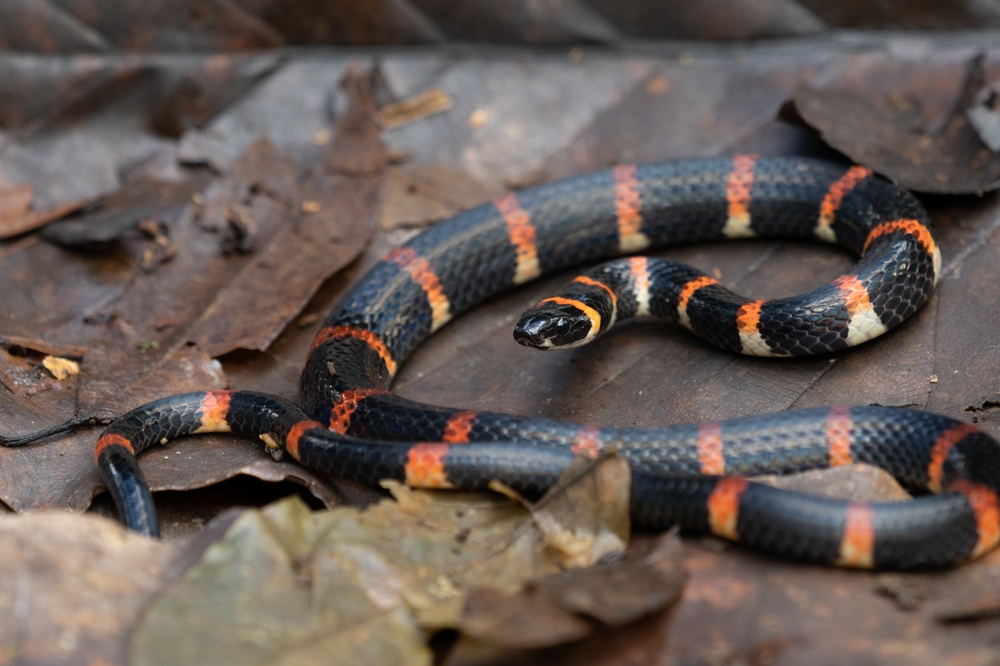
The Eastern Coral Snake is a vivid and beautiful serpent, often mistaken for non-venomous species due to its colorful banding. Found in the southeastern U.S., its venom is incredibly potent, though bites are rare due to its reclusive nature. Recognize it by the red and yellow bands touching a clear warning to stay away.
This snake is more likely to be spotted hiding in leaf litter or sandy soil, avoiding human interaction at all costs. If you encounter one, maintain a safe distance and admire its beauty from afar. As always, immediate medical attention is necessary if bitten, given the severity of its venom.
13. Texas Coral Snake
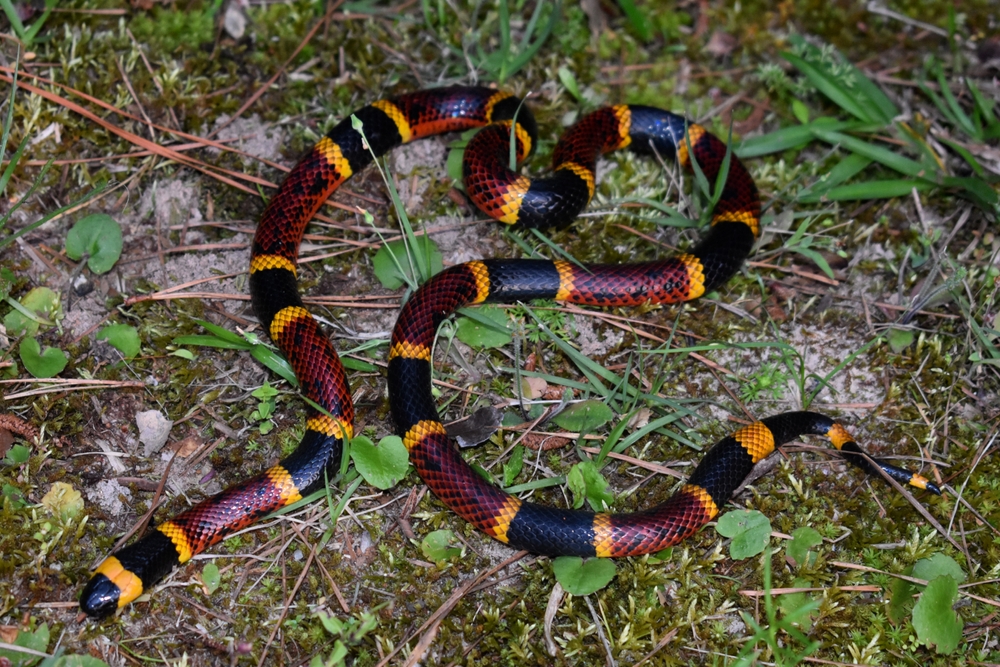
The Texas Coral Snake, though small, carries a punch with its potent venom similar to its eastern cousin. Found in Texas and parts of the southern U.S., it shares the iconic red, yellow, and black banding pattern. This snake is more of a solitary creature, preferring to stay hidden from view.
While its shy nature means encounters are infrequent, it’s imperative to recognize and avoid this snake. If you’re exploring its habitat, keep to the trails and be watchful of where you place your hands and feet. As with all venomous snakes, safety and respect are paramount for both you and the snake.
14. Eastern Indigo Snake
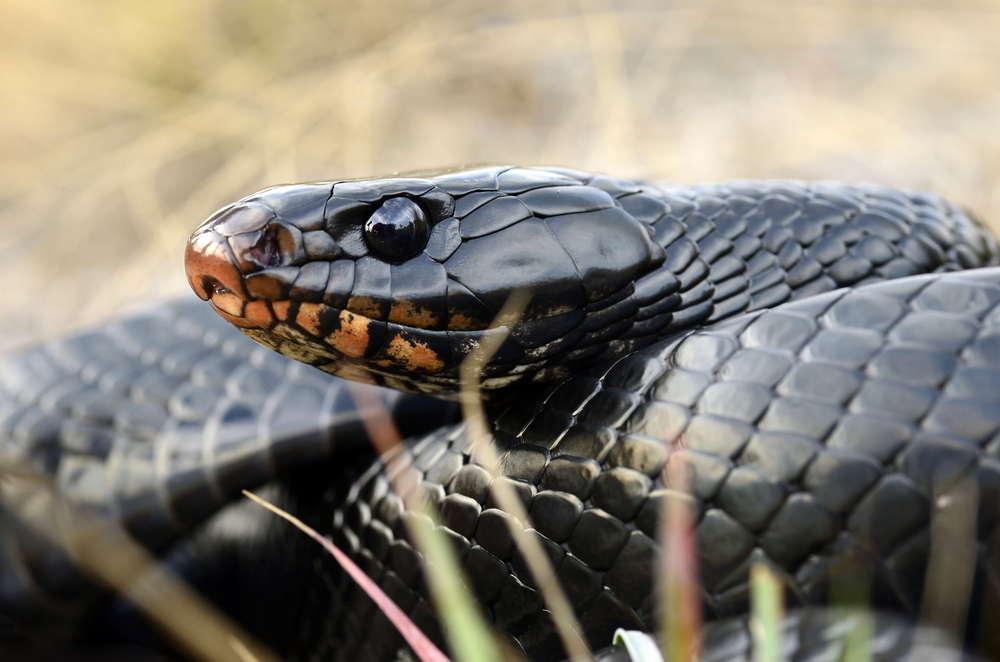
Although non-venomous, the Eastern Indigo Snake is worth a mention for its sheer size and presence. Found in the southeastern U.S., this snake can grow over eight feet long, making it the largest native snake in North America. Its glossy black color and powerful build can be intimidating to those unfamiliar with it.
Despite its daunting appearance, the Eastern Indigo Snake is harmless to humans and plays a crucial role in controlling venomous snake populations. It often inhabits the same regions as rattlesnakes, keeping those populations in check. Admire this gentle giant from a distance and remember its important ecological role.
